All images courtesy of Steve Lynch
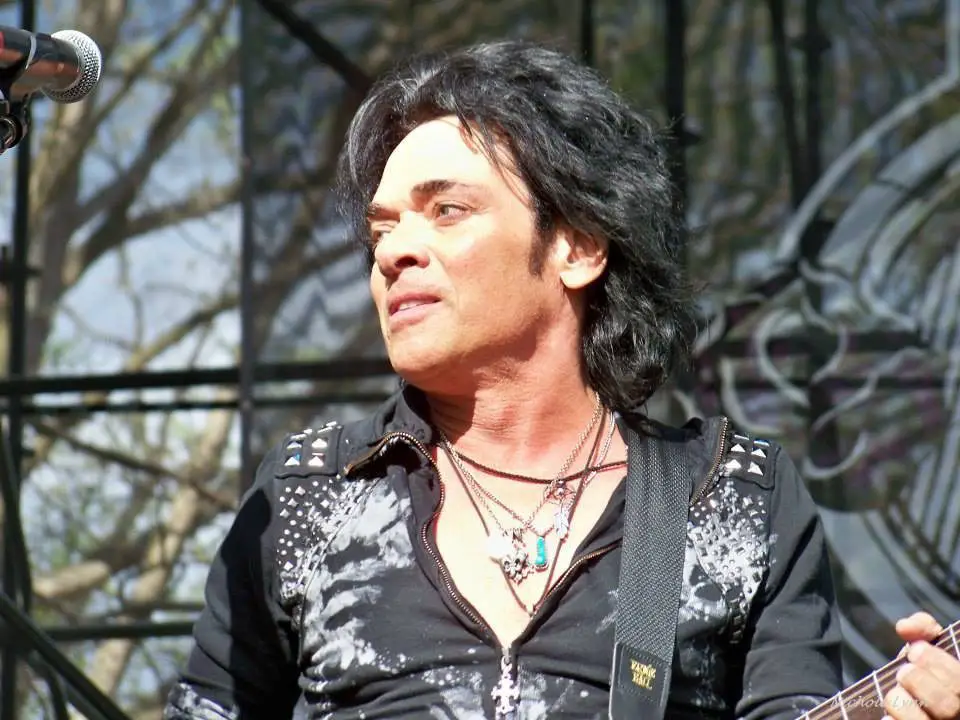
Frequently overlooked among the medley of guitar heroes produced from the 1980s, Steve Lynch proved to be every bit as influential as his lionized counterparts.
Praised for the evolution of the multi-fingered tapping technique he once discovered in Seattle in the mid-1970s, Lynch had a prominent hand in introducing a more technical style to the guitar community. In fact, the first book that he authored, The Right Touch, provided a comprehensive overview of the technique and became a best-seller in 1979.
Lynch would eventually connect with Randy Rand, Steve Plunkett, Steve Isham, and Keni Richards through a series of jam sessions in North Hollywood in the early 1980s. A string of good fortune materialized, as a five-track demo fell into the right hands and altered the course of music history, expediting the birth of Autograph.
Armed with a band of seasoned musicians, Autograph’s debut album, Sign in Please, achieved gold status in 1985. The album features the iconic rock anthem “Turn Up the Radio,” which received regular rotation on MTV and ultimately soared to No. 29 on the Billboard Top 100 on Mar. 16 1985. The song also includes a brilliant solo from Lynch, which yielded “Guitar Solo of the Year” honors from Guitar Magazine.
Autograph followed the debut album with That’s The Stuff (1985) and Loud and Clear (1987) but never managed to find its footing as the decade advanced.
Lynch, who has authored a series of books pertaining to guitar, also traveled to 20 different countries and taught 325 guitar clinics during his lifetime. The consummate innovator, Lynch regularly taps into his creative prowess to inevitably add another dimension to his playing.
“I’m changing my technique a little bit and trying new ideas and sounds. To be an innovator, you have to keep on innovating. That’s what I plan to do,” Lynch remarked.
I sat down with Steve to discuss, among other things, the origins of his two-handed tapping technique, intricacies of writing guitar solos, Autograph’s turbulent musical journey, a pair of upcoming projects on the horizon, and more.
Andrew:
Who were some of your most integral influences as a young musician?
Steve:
It was The Beatles that initially got me into music. That’s what really turned my head. I was only nine years old in 1964 when they played on the Ed Sullivan Show. Then, a few years after that, I heard Jimi Hendrix in 1967. At that time, I started playing bass because there was already a kid on my block that played guitar. He wanted to put a band together, so he said, “Why don’t you play bass?” But I really wanted to play guitar because I was such a Hendrix fan. So, a few years later, I switched over the guitar. I started on guitar when I was nine [years old], but it was a piece of crap acoustic, so I couldn’t really make much out of it as far as chords or anything. The strings were so high up the neck; I couldn’t press down hard enough to make a chord.
So, I started playing bass in 1967; then, I switched to guitar permanently on Sept. 18, 1970, when Jimi Hendrix passed away. I went, “That’s it, that’s what I want to do. I’m a Hendrix fan, and I want to carry on where he left off.”
The other people that influenced me are Jimmy Page, Jeff Beck, and David Gilmour. It was those four guys that really had an influence on me in the early years. I’m a bit older; I’m 66 now, so I grew up with 60s and 70s music; the 80s, by the time we got signed to RCA, I was almost 30 years old. So, I didn’t listen to 80s bands as an influence; I was a part of that culture, but that’s not what influenced me personally.
Andrew:
You’re revered for your two-handed tapping technique. How did that originate, and how were you able to hone that skill and make it your own?
Steve:
Well, it came about in the early to mid-70s. There was this guy in Seattle named Steve Buffington who would do it. I asked him, “What are you doing when you do that?” He told me, “You just find different notes on the scale and you hit it with your right hand.” So, I just started playing around with it, and I saw this guy Harvey Mandel, who used to be with John Mayell and the Bluesbreakers and he had several solo albums out. I saw him perform live once and he was doing that. He was using a couple of fingers, and I just went, “Okay, I’m going to incorporate my first, second, and third finger.” But it was when I went to the Guitar Institute of Technology – classes there started in March of ’78 – and just a few months after the classes started, there was a guy Emmett Chapman that did a clinic there who invented the “Chapman Stick.” The stick is the instrument that is held more vertically, so you have five strings that you play on the bass strings with your left hand, and then five strings that you play with your right hand that are the trouble strings, the higher register.
I just watched him do this amazing stuff with this instrument. He mentioned during the clinic that he came up with this technique because he got so far with guitar, but he wanted to play the instrument more like a piano, where he could play the lower register notes with his left hand and the higher register notes with his right hand.
After the clinic, I went up and asked him about it, and he said, “Well, can I see your guitar for a second?” I said, “Yes, of course,” and handed over my guitar. He did a couple of things with the pentatonic scale and a couple of chord things, and a light bulb just went off above my head. I went, “That’s it. That is so cool.”
What I did was I took all the curriculum that I was learning at the school, and I wrote everything out two-handed. I wrote it out on graph paper, which means I’m looking at a guitar neck, not in notation. I figured out a way to try it so that the notes that I was playing in my right hand had a circle around the numbers on the guitar neck, and the left hand had squares around it. And then, if I’m playing a hammer or a pull-off, I put a triangle around it. So I thought, “This would be a good way so that I know exactly what I’m doing.” I wrote down the whole school curriculum this way; songs and everything.
When I played at the graduation ceremony in March of 1979, Tommy Tedesco and Howard Roberts – Howard Roberts wrote the curriculum for the school – they watched me and were just blown away. The whole school was blown away because I didn’t show anybody what I was doing; I was just very private about it because I wanted to make sure that I was really good before I performed in front of anybody. I got up at the graduation ceremony and played three different songs, and it was all using both hands on the fingerboard. The audience went nuts.
Howard and Tommy came up to me and said, “You should write a book about that.” I said, “I already have enough material for three books.” They said, “Really? Well, gather it together. We want to take you to our publisher.”
Just a few days later, we went to their publisher, and within ten minutes, I had a book publishing deal. The Right Touch came out in 1979 and became a best-seller.

Andrew:
What ultimately brought you, Steve, Randy, Keni, and Steve together to form a band?
Steve:
Well, we were all guys that had played in different incarnations of bands previously. So, we all knew each other, not only from playing in different bands but also from the L.A. music scene and studio work. We’d run into each other all the time. All of us were playing in bands at the time when we got the tour with Van Halen. That was kind of a freak accident, actually.
Steve Isham [keyboards] and I were playing in a group called Holly Penfield on Dreamland Records, Steve Plunkett was playing in a group called Silver Condor on A&M Records, and the drummer [Keni] was playing in a group called The Coup on A&M Records, and Randy Rand [bass] was playing with Lita Ford. We all had paying gigs, but we were all sidemen; it wasn’t really our project. Since we all knew each other, we’d get together on the weekends and jam at Victory Studios in North Hollywood. We’d play AC/DC, Aerosmith, Led Zeppelin, and Deep Purple songs just to have fun. It was like a beer-drinking session. We would invite different people down; all these musicians from L.A. were coming down. All these different people from Ratt to Mötley Crüe. This was 1983 before a lot of these bands took off.
One day, [producer] Andy Johns came down. We had been writing some original songs at that point for the heck of it; we were all writers, so we thought we’d write some songs together. We played [Johns] some of our originals, and Andy absolutely loved them. He said, “Next weekend, I have this free time at Gower Studios. This band owes me some time because I did some free mixing for them. Why don’t we go in and cut a demo of these five songs you have?” We said, “Yeah, sure. Free recording time? Absolutely!” So, we went in on Saturday and cut all five songs; the following day, we mixed it.
That tape ended up getting played for David Lee Roth. David and our drummer, Keni, were jogging partners. They would meet at 8:30 every morning and run up and down Sunset Boulevard for miles. They would jog until they puke; that’s what they used to say. David said, “I want to hear the new stuff that you’re doing with your buddies.” Keni played it for him, and David said, “I love this material. Why don’t you guys come out and open up for us on the 1984 Tour?”
Keni said, “Well, I could ask the guys, but we’re all in paid gigs right now.” But, we had already recorded with these other projects, so we had time and thought, “You know what? Let’s come up with a name, go out, and write a few more songs. This will be fun.” So, that’s what we did; we borrowed money, rented a Winnebago, drove from L.A. to Jacksonville, Florida, and opened up for Van Halen on January 18, 1984. The next thing you know, we’re playing all over and getting all these record label offers – from RCA, A&M, Epic, Geffen, Warner, Atlantic. We thought, “We have a project now that’s our own project. We’re not sideman. We have a name; we’re playing in front of all these people and getting all of this exposure.” So, we decided why not? Let’s sign with a label and quit our other projects. We signed a deal backstage at Madison Square Garden, and that was it. RCA [Records] offered us one hundred percent of the publishing, and we took it. After a couple more months, [RCA] said, “Okay guys, it’s time to come back to L.A. and start recording the first album.”

Andrew:
How did you guys decide on the name Autograph?
Steve:
Well, in the Winnebago, we had to come up with a name. Everybody wrote down ten names on a piece of paper, then we passed those papers around and crossed out names that we didn’t like. We ended up with two Names left: Red Cross and Autograph. We had a signature sound because of Steve Plunkett’s voice, Keni’s drumming, and my guitar playing. We didn’t sound like anybody else, and our writing didn’t sound like anybody else. So, we said, “You know what? Autograph is a good name for us because we don’t sound like anybody else.” Then we thought, “We could always change it later on,” but after playing in front of so many people with that name, we said, “Let’s just keep it.”
Andrew:
Perhaps you can clear this up for me. Legend has it that Eddie Van Halen, or his camp, came up to you before a show and forbid you from doing your signature two-handed tapping technique. Is there any validity to these claims?
Steve:
Well, what happened was, it wasn’t Eddie that came up to me; it was [Van Halen’s] tour management. They came up right before we went on and said, “Are you Steve Lynch?” and I said, “Yes.” They said, “Are you the guy who wrote the book on that two-handed technique?” I said, “Yes.” They said, “Well, you’re not allowed to do that on this tour. That’s Eddie’s thing.” I said, “I wrote a book about it before I had any idea who this guy was. And it’s completely different from his style, anyway.” They said, “It doesn’t matter. You’re not doing it on this tour; otherwise you’ll be fired.” So, I was not happy, to say the least.
I later found out – I talked to Eddie – and I said, “Why don’t you call the dogs off?” Eddie knew who I was because when you do that technique around people in L.A., they’d say, “Have you seen that guy Steve Lynch, who does this crazy stuff with all four fingers on both hands?” I didn’t know if he told them, but from the way he explained it when I talked to him, he said, “I don’t know anything about that; you can do whatever you want. That’s not for me to say.” So, I started doing it.

Andrew:
The song “Turn up the Radio” will forever remain in the annals of Rock history. Where did the inspiration for that song come from?
Steve:
We were at rehearsal at Victory Studios in North Hollywood, and I started playing this riff, and I was just jamming on stage by myself. Then Randy got up, I showed him the riff, and we started playing together. Then Keni got up and started playing a drumbeat to it. Everybody got up on stage and we made this into a song within a half hour, then we all sat down and thought, “Let’s all write some lyrics for this real quick. It’s got a really cool groove.” We sat down and wrote the lyrics together. Within a half hour, we had all the lyrics, the only difference being, is that it was called “Turn Up the Cassette Machine.” Later, of course, we replaced that with radio, because we didn’t think cassettes were going to be around forever.
RCA didn’t think it was a strong enough song to have our first single centered to me. We actually went into the studio and recorded it without them knowing it, and then when they listened to it back, they went, “Yeah, let’s have this be the first single.” Sometimes these record executives don’t know as much as they portray themselves to. The musicians, they’re the ones that are in the game. They’ve been in the game their whole lives.

Andrew:
The solo on “Turn up the Radio” remains one of my all-time favorite solos and earned “Guitar Solo of the Year” recognition from Guitar Magazine. What do you recall from the recording of that iconic solo?
Steve:
It took me five eight-hour days, because I knew that this song was going to be a hit. So, I worked and worked and worked for my solo. I kept on coming up with ideas, and then I would throw them away. I was getting very frustrated because I wanted to find the perfect solo. I actually spent about 40 hours on that solo before I finally came up with something that I was really satisfied with. That was the product that’s out there today.
It’s difficult trying to come up with something unique, but I always wrote my solos for that particular song. I’m not one of those guitar players who just goes and jams over the area where I’m supposed to be doing a solo. In fact, I can tell when other guitar players do that. To me, they’re kind of meandering; they’re playing licks that they already know. I look at the song like; we spent time writing the song; why shouldn’t I spend time writing a solo for it? And that’s how I’ve always looked at solos. I’ve always worked on my solos, sometimes for weeks at a time, before I come up with something that I really like. I did that with all of my solos; I always spent a lot of time working on my solos, more so than any other part of the songs. I tried to be unique and do something that really fit the song itself.
Andrew:
That solo is incredibly nuanced and technical.
Steve:
We go into a different key; we go to the key of A-Major, Mixolydian when we go into it, so that gives you the inclination that something different is going to happen. So, as soon as I go into that chord, I come in sliding up – I’m going up the A Mixolydian scale, I’m going from the fourth to the major third, and then to the root to the minor seventh, and just climbing up the scale like that. Then, I climb up to the top, and then I do this descending thing where it’s in third and sixth intervals – all being major – and I descend down to that. Then, I start doing the hammer-on part, and I’m doing the triads for each different chord that’s going by and I follow the chords. And that leads up to the crescendo of the solo.
Andrew:
The 80s music scene is synonymous with the sacred Sunset Strip in L.A. As someone who moved to Los Angeles in the late 1970s, talk about the drastic evolution that took place through the years.
Steve:
I’ve lived in L.A. from 1977 to 1992, and I think I was down there for the best part of that scene. I got to see the whole 80s scene. All the local bands were hanging up flyers, and that includes Mötley Crüe, Ratt, and Poison, and all these different groups that came out of L.A. I mean, L.A. was the place to be for all the 80s bands. It was really interesting to see that whole scene; there was a camaraderie between the bands. Every place was always packed. The Whisky was always packed and had music going seven nights a week. Most of these clubs did, like the Troubadour, Gazzari’s, Starwood; music was plentiful at that time. It was an exciting time to be there. I was down there before it happened, because I moved down there when the Disco era was going on. So, to watch it blossom into what it did in the 80s, was something that was really cool to watch. It took on a whole genre of its own. What was really great about the music back then, was that it was all about positive things. It was all about sex, drugs, and Rock ‘N’ Roll; it was party time, it was fun.
Then, the whole Seattle Grunge thing came on, which was all about depression, drug addiction, and suicide. I watched everything change; it was like a dark curtain came over everything. People may argue that that spoke more to the people, but I disagree with that; maybe some people, but I think that music is an escape for people. They want to feel good when they hear music; they don’t want it to enrage them or make them depressed. The whole Grunge thing came in and destroyed that whole vibe. That’s why today, 80s music is far more popular than any of the 90s stuff. People that grew up in the 80s can’t let go of that music because it gives them that feeling. It was all about having a good time and positive vibes.

Andrew:
Sign in Please reached gold status in 1985 and appeared to catapult the band to Rock stardom. What do you recall from the recording of that album?
Steve:
The elated feeling that we had in the studio, even though all of us had been in professional studios numerous times. Being in Record Plant [Studios] and having a producer like Neil Kerndon, there was a camaraderie that we had that was unlike any other. We were a band that got along very well; we didn’t bicker or disagree. We kind of let everyone go with the flow. At that time, I was 29; Keni was 28; the other guys were like 31. So, everybody was a pretty seasoned player and very accustomed to being in professional studios. Everything went well as far as our writing, arrangement, camaraderie, and playing. It just fell together very nicely. We recorded that first album in 30 days — and that’s including mixing and mastering.
When I did my solo parts, as I always do, it’s the engineer and me; a lot of times, I don’t even allow the producer in. I already have my solos down. I’ve already put all my work into it; nobody is going to change anything. I have them down, and that’s it. I’ve never had a problem with a producer coming in and going, “You know what? You should change this part right here.” They always come back in after listening and say, “Perfect.” They knew that I curtailed that solo to fit that song as perfectly as I possibly could.
Andrew:
The band’s follow-up album, That’s the Stuff, warranted more attention than it received. There are some great tracks on there, my favorite being the busy instrumental, “Hammerhead.” How did you come up with that concept?
Steve:
I kept on coming up with these different hammering techniques, so I took all these ideas and started putting them together into a solo. The band thought that it was a really good idea that I do a guitar solo as a featured piece to show off my playing. When I went into the studio, I tripled it. So, it’s not one guitar you’re hearing; it’s three guitars playing the same thing. That was a bitch – it took me eight hours to put that down! My hands were killing me by the time I got that third one down. There’s no click, there’s no tempo going on. So, I had to match all of that without there being a click track or anything. It was tough, but I eventually got it down.
The second album had some great stuff on it. “Changing Hands” was on that; great ballad. What happened was, Bob Summers, the president of RCA in New York, passed away. Then, Bob Buziak came in and took over as president. When he came in, he fired fifty percent of the staff that was working at the New York offices. And in return, they fired the people at the RCA offices on Sunset, as well. During our second album, they were putting new people in place, these yuppies that didn’t know anything about the music business. They just hired them for marketing, but they didn’t know what they were doing. We were actually telling them how to do their business. We weren’t very happy about that. There was no promotion for anything; it was swim or die for the artists.
And then, on the third album, I’m really surprised that they were still a little bit in disarray at the offices. They still didn’t know exactly how to promote, and that was in 1987 that [Loud and Clear] was released. I thought that was our best album if you listen to the production because that’s when our schedules matched up; Andy Johns was available, and we were available. We wanted Andy to produce everything – Neil Kernon was a great replacement for our first album, there’s no doubt about that. But, we produced the second album, along with our engineer that we had always used, Eddie DeLena. Then, on the third album, Andy was available. We spent three months on that album, which was a long time for us. When I listen to the writing and the production on that, I go, “This is our best album. There’s no doubt.” Our writing had matured, and our playing had matured; we had tightened up as a band. Before that first album, we had only played, really, five months of gigs.
I’m still grateful for the success that we did have, but I really believe that if we would have had the right company and the right promotion behind us, it would have went a lot further.
Andrew:
It doesn’t get much more surreal than opening for Van Halen on the 1984 Tour, but Autograph also toured with Mötley Crüe at their peak in 1985. Is there a particular memory that you can share from that Theatre of Pain Tour?
Steve:
At the end of the Mötley Crüe tour, Mick [Mars] and I sat next to each other on the flight back to L.A. During the tour, we didn’t get much of a chance to talk because each band was always really busy doing their own thing. We were always partying together, but Mick was always off to himself, so I didn’t get much of a chance to talk to him. But, on that plane ride home, we drank screwdrivers the whole time and had the time of our lives. It was so cool because I really got to know [Mick] as a person. He’s just a laid back, real sweetheart of a guy.
:format(jpeg):mode_rgb():quality(90)/discogs-images/R-5732544-1401161960-5259.jpeg.jpg)
Andrew:
Like many contemporaries, Autograph appeared to fizzle out as the decade neared its expiration, but what ultimately led to the disbandment in 1989?
Steve:
We were doing all the right things. We were touring our asses off – I mean, we toured with Heart, Ronnie James Dio, Van Halen, Mötley Crüe, Aerosmith, we did some shows with Whitesnake and Scorpions; the list goes on and on. We were doing everything right; it was the lack of marketing because we were doing more than most bands out there – more touring, writing, stuff for movies and T.V.
In December of 1989, we were in rehearsal doing demos for Epic Records because our three-album deal was over with RCA. We were going to sign a three-album deal with them, and we wrote some really good songs that never really saw the light of day because of the fact that the Grunge thing came in. Epic kept on saying that they had a problem and explained that Grunge was starting to come on and radio stations were starting to play nothing but that.
Epic said, “We don’t know how we’re going to market you.” So, during our last rehearsal, as we’re going through these songs and writing new material, I took off my guitar and threw it in the case and said, “Guys, it’s over. Listen to the radio.” After I set my guitar in my case, Randy did the same and said, “Yeah, I’m done, too.” So, everybody just looked at each other and said, “Okay, it’s over.” That was it.
What really kind of brought that on was Epic telling us, “We don’t know how to market you guys. We’re willing to sign a three-album deal with you, but we don’t know if it’s going to do anything.” I thought to myself, “Well, what’s the point? We’re going to have to go back to probably playing clubs again because Arena Rock was over.” I didn’t want to do that; I didn’t want to take a giant step backward. I thought we were successful – I thought we should have been much more successful — but that’s just the way the cards fell.
Andrew:
Shortly after disbanding, you undertook a solo project, Network 23. By 1990, there was clearly a stigma surrounding many of the artists from your era, so how challenging was it to forge ahead in the music industry?
Steve:
I had a bunch of material that I’d written on my own. I wanted to do something that was completely different from the 80s. That’s why I never introduced those songs to Autograph, I kept them to myself, because I knew it was not the right fit. My favorite bands were Pink Floyd – Darkside of the Moon is my favorite album of all-time – and I was into Led Zeppelin, Moody Blues, Genesis; I was into bands that recorded more conceptual albums. But I still kept a little commerciality on [the Network 23] that album, but it was my own thing. I wrote, arranged, and recorded most of the instruments on the album. Drums and vocals were the only things that I didn’t do. When I tried to shop that record as well, I hired Marko Babineau, who used to be the A&R guy for Geffen Records. He said, “Send it out to me and I’ll shop it around.”
I paid him a big chunk of money to shop it for me, and he said, “Whenever I bring it into somebody’s office, and I say your name, they throw it into the trash, because you’re [from the] 80s. That’s taboo.”
They wouldn’t even listen to it, even though it was completely different from Autograph and didn’t sound 80s at all. It was a concept album, basically.
Andrew:
Obviously, you had your Network 23 project, but how else did you spend the decades between the disbanding and reformation in 2013?
Steve:
I was teaching [guitar] at a school up in Seattle. Then, that school/store went out of business, so I took the twelve teachers there and I opened my own school. It was called the Federal Way School of Music and it was a huge success for ten years. I was actually making more money than I’ve ever made in my life, so it was a hard thing to let go. I let it go, because I was always getting sick in Seattle. I was allergic to the molds and cold weather up there. I didn’t get colds; I got respiratory infections.
On June 30, 2016, I was in a 20-foot truck; I had sold my house and given away all the furniture. I just had the bare necessities, had my car towing behind the trunk, and I started driving. I went to Florida, and I didn’t even know where I was going in Florida.
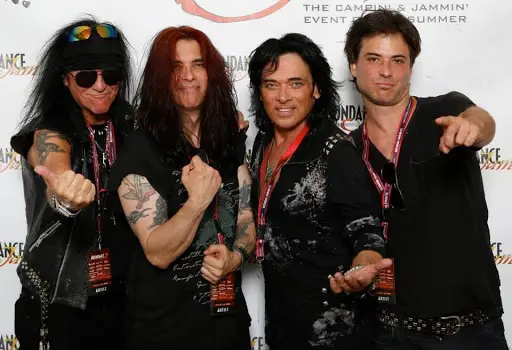
Andrew:
After 24 years of inactivity, Autograph was resurrected in 2013. Take me through the initial conversations.
Steve:
Randy and I saw each other at the NAMM Show in 2011. We kicked around the idea of getting back together for a reunion, but we just talked about it. We thought it would be interesting and fun to go out and do that again. I had a lucrative business; I was making good money. And [Randy] was in the leather business; He’d make these studded dog collars, wristbands, and all that. It started as an idea in 2011, then Keni got ahold of us and said, “We gotta put the band back together because my wife’s alimony that she paid me is gonna run out. I’m not gonna have any money.” He wanted to get back into it just for the money [laughs].
We thought about it, but I let them know that there can’t be drugs involved. We actually asked Steve Plunkett if he wanted to do it again, but he wasn’t able to do it. Steve Isham passed away back in 2009, so we were going to do it without keyboards. Keni got recommended a singer, Simon Daniels, so we auditioned him and Simon just nailed it. He had a great image and sang the songs well, but it sounded totally different from Autograph. That was something that kind of made me shy away a little bit, but I thought, “You know what? It’s a new version; maybe we’ll just come up with a new sound.”
Then, the second time I flew down [to L.A.], Keni was in rehearsal and really high on drugs. He was tweaked out and couldn’t make it through a whole song. He kept on stopping and saying, “The tempo doesn’t feel right,” and then he’d go on babbling for ten minutes. So, I had a talk with him after rehearsal, and I said, “Keni, I told you no more drugs.”
So, the next rehearsal, I fly down, and [Keni] doesn’t show up. I went, “That’s it; no more. I’m going back to Seattle, I have a lucrative business up there, and I don’t want to do this anymore.” Then, Simon said, “Lookit, I have this drummer who will come in and learn everything. He’s got a great image and a great attitude.” Simon and Randy talked me into it, and I said, “Okay, I’ll give it one more shot.”
A couple of weeks later, I fly down again. Marc [Wieland], the new drummer, just nailed it; he was great. I decided, “Okay, let’s do it. We have a booking agent now; let’s go out and play some shows.” I didn’t know how long it was going to last, but for the next five and a half years, we did an EP, an album, and a lot of touring. We played a lot of festivals, casinos, theaters, and clubs.
I decided, after five and a half years — Autograph was only together for six years. So, it was almost the same length of time. I looked at it like, “I’ve spent twelve years with this group,” but I wanted to do something that was completely different. I didn’t want to do straight ahead, bare-bones Rock ‘N’ Roll anymore. I wanted to do something much more experimental so that I could show my other side of writing, production, arrangement, and guitar playing. All of those different ingredients.
Also, during the last version, I was the tour manager and general manager; I did all of the taxes and accounting, all the stage advancing; I did all the driving and hotel stuff. I was constantly busy, and at the end of the day, I was just so burned out because I had to take care of everything. I thought, “The only time I really have time to relax is when I’m up on stage playing.”
Andrew:
Tell us about your latest project, Blue Neptune.
Steve:
Blue Neptune is going to be a concept album. I’m taking all of the different things that influence me – I listen to very obscure stuff from all around the world. I don’t listen to many American bands at all because there’s so much more out there. One of my favorite bands now is a group out of England called Porcupine Tree; they’re very experimental like Pink Floyd, Emerson, Lake, and Palmer, and all those groups from the late 60s-early 70s were. I’ve always wanted to do an album where it just incorporated a lot of different styles and genres of music encapsulated all into one album. This way, I can do whatever I feel like doing, and I’m not going to try to cater to sales. I’m not going to worry about the marketing of it or the amount of publicity it has. I just want to be honest with myself and do my own thing. It’s my personality through music.

Andrew:
So, do you anticipate its release within the next year or so?
Steve:
Yes. But I will release a single at a time. It’s going to have everything from African Tribal beats, to orchestral symphonic sounds, to some really heavy, industrial stuff. I like Al Jourgensen; I liked Ministry and that whole concept. It will have some of those elements in it, as well. I want to do everything that I consider to be cutting edge, where people are not going to be expecting anything that comes off of this album to be from me; they’re going to see a whole different side of me. It’s not going to be the 80s; it may have a certain 80s appeal in some of the songs, but it’s going to be whatever I feel. That is a freedom that feels wonderful.
Andrew:
How did the concept for your upcoming book, Confessions of a Rock Guitarist, originate?
Steve:
That came about from me telling stories. Everybody from family, from friends, from fans – whenever I tell these stories, they say, “You gotta write a book.” I mean, there’s just so many stories; there is a plethora of different things that happened in my life. I’m talking about from the 60s on; the 80s were just one part of it. There’s just a lot of different adventures that I’ve had from all over the world. I’ve taught in 20 different countries; 325 clinics. I’ve taught in every state except for Maine and Alaska. So, I look at all of these experiences, and it adds up to a lot of different stories. Five or six years ago, I started writing down sentences that would remind me of different stories. Before I knew it, I had over 400 sentences. Now, I had to edit it down quite a bit for it to fit into a book, but I could easily have three different books. I took the most funny and important stories and put them aside for the book. Then, I put it all into chronological format. I’m in the process of proofreading it and editing it right now. The book is completed, but I’m just fine-tuning it, basically.
Also, I wanted to get your opinion on this because I look at myself as kind of an outlier; I’ve always been on the outside looking in. A lot of this book is the way that I look at things from an outside point of view. I’ve always looked at my life as though I’m sitting on a hillside, looking down on a village called humanity. I’ve always had an outside perspective like that. So, I was thinking about titling my book, From the Outside Looking In: The Story of Guitarist Steve Lynch.
Andrew:
Oh, I like that!
Steve:
Okay, do you like that better than Confessions of a Rock Guitarist?
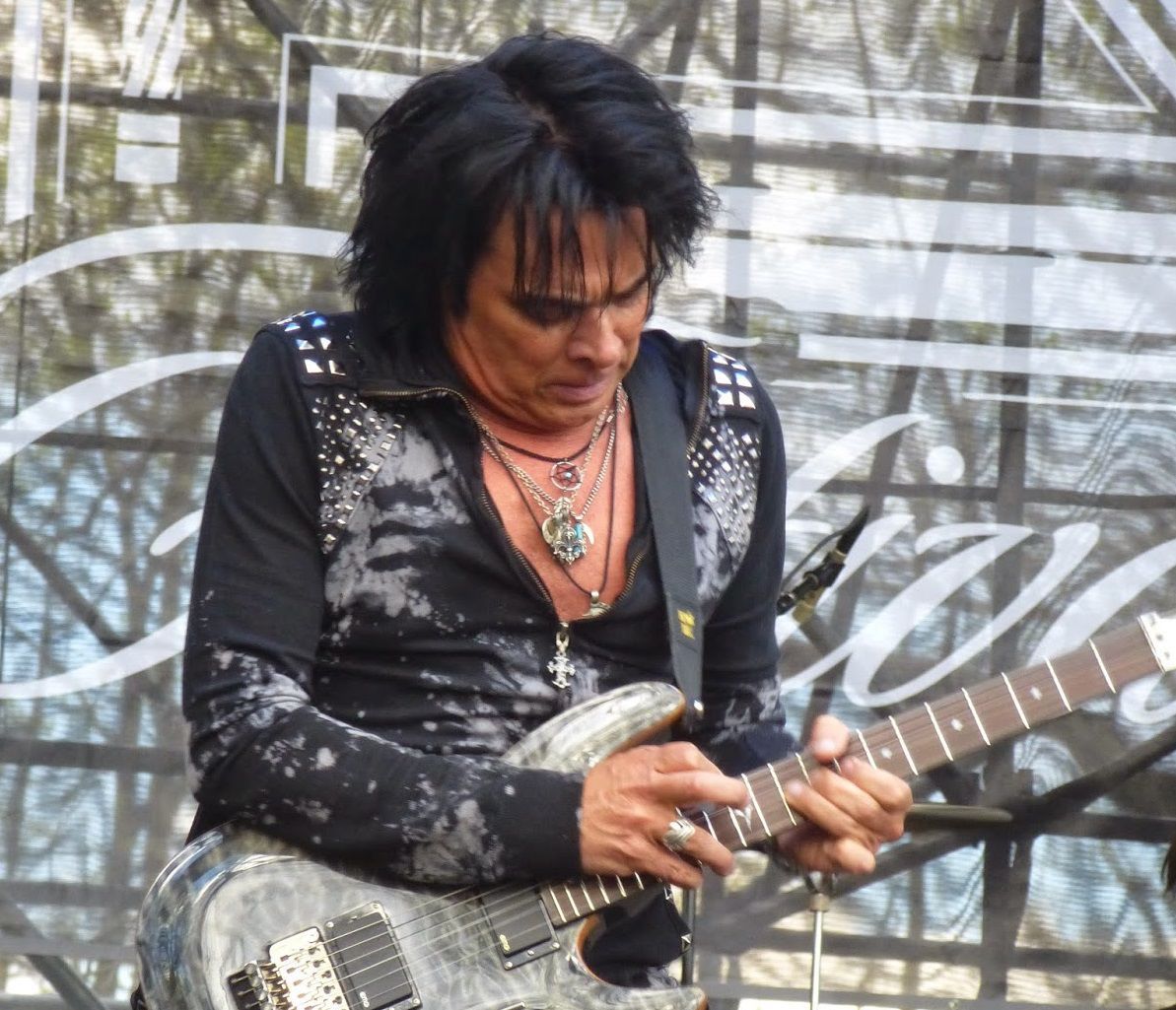
Andrew:
Yes, because it’s far more distinctive. Also, the stories expand well beyond your journey through the 80s and time with Autograph, so the initial title may be a bit misleading.
Steve:
Okay, good. That’s the way I feel about it, too. With Confessions, I feel like it just fits into the same genre where everybody puts out a book called “Confessions of this, Confessions of that,” and then they expect to read a bunch of dirt. But I’m not throwing dirt on anybody – even my exes [laughs]. I think I’m gonna go with that, actually. Thank you for your opinion on that; you just reiterated the way I was already feeling.
Andrew:
The 80s music scene featured a vast assortment of guitar heroes, but you were among the most influential of that era. How do you view your legacy as a guitarist?
Steve:
I look at it like this – I’m very fortunate even to have made a name for myself. I’m very grateful for that and humbled that people enjoy what I do. The most important thing to me is that I have influenced other guitarists and earned respect from guitarists and musicians in the industry. There are very few guitar players in the world who haven’t heard my name, and that, to me, is much more than I ever thought I’d accomplish.
Andrew:
When you look back on your six-year run with Autograph, what are you most proud of?
Steve:
The hard work that we put in, the success that we did have, and the iconic classic, “Turn up the Radio.” I’m very proud of that, because it’s still getting tons of airplay to this day – 37 years after its inception. A lot of people will categorize us as being a one-hit-wonder, but it was so much more than that; we had some really great songs. But I don’t hold a grudge or anything; I’m not bitter. I just look at it like, “That’s the way it happened, and we still had success.” A lot of bands will say “They’re just a one-hit-wonder.” Well, at least we had a hit.

Interested in learning more about the artistry of Steve Lynch and Autograph? Check out the link below:
Dig this article? Check out the full archives of Shredful Compositions, by Andrew DiCecco, here: https://vinylwritermusic.wordpress.com/shredful-compositions-archives/
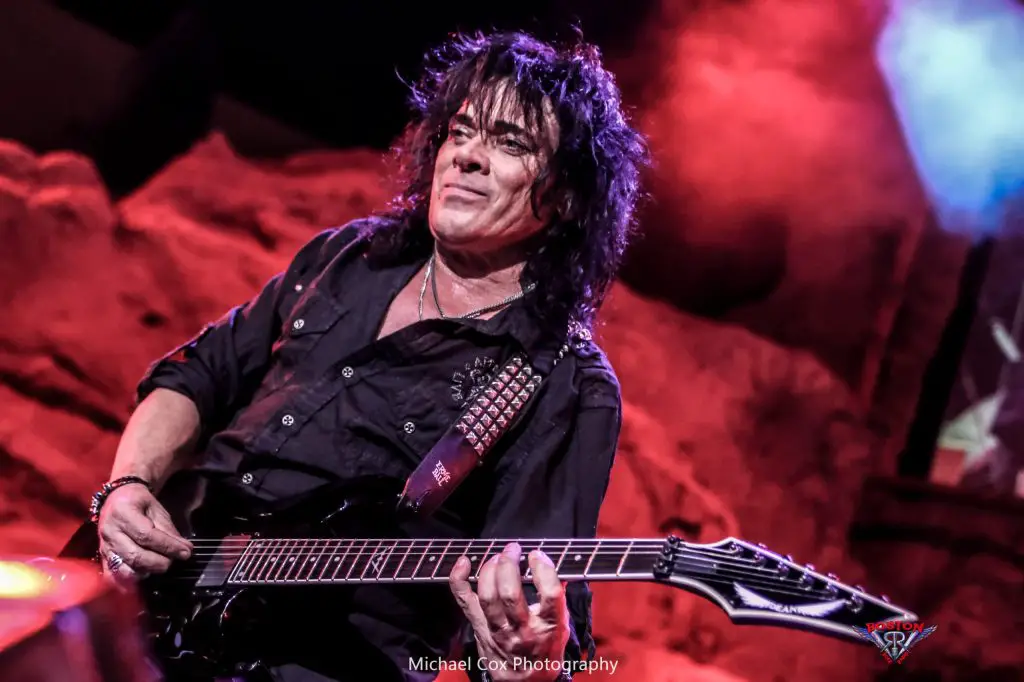
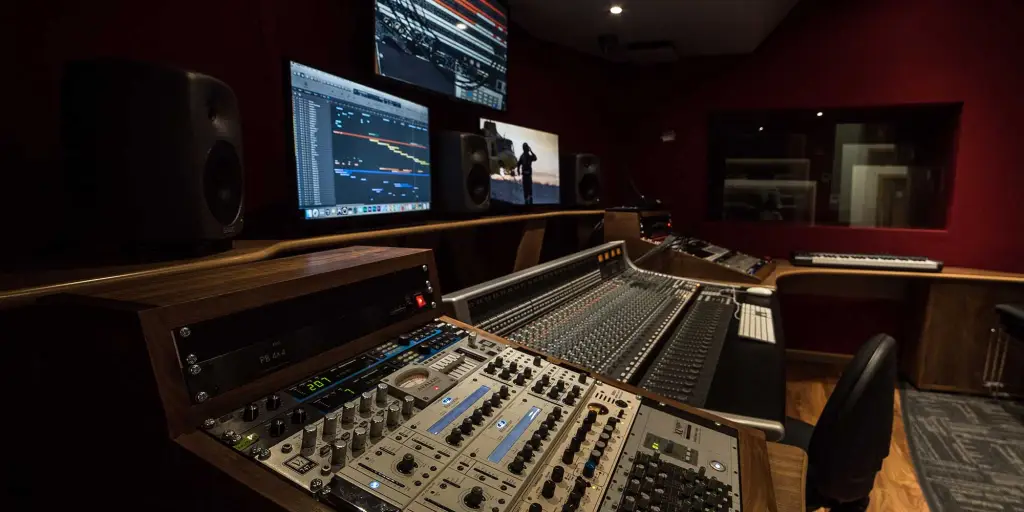

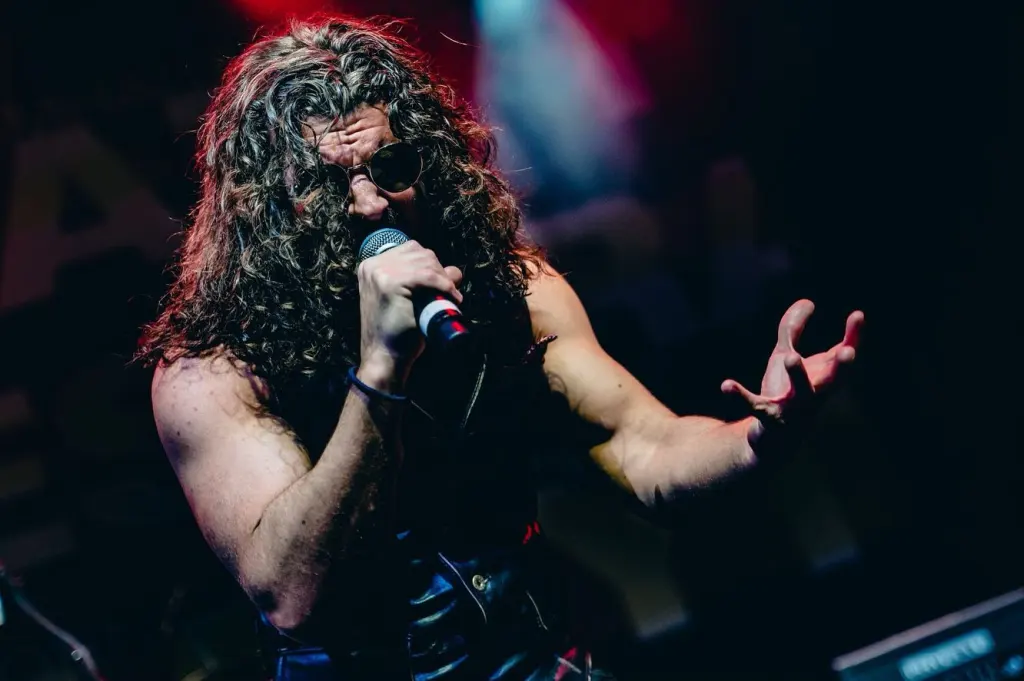
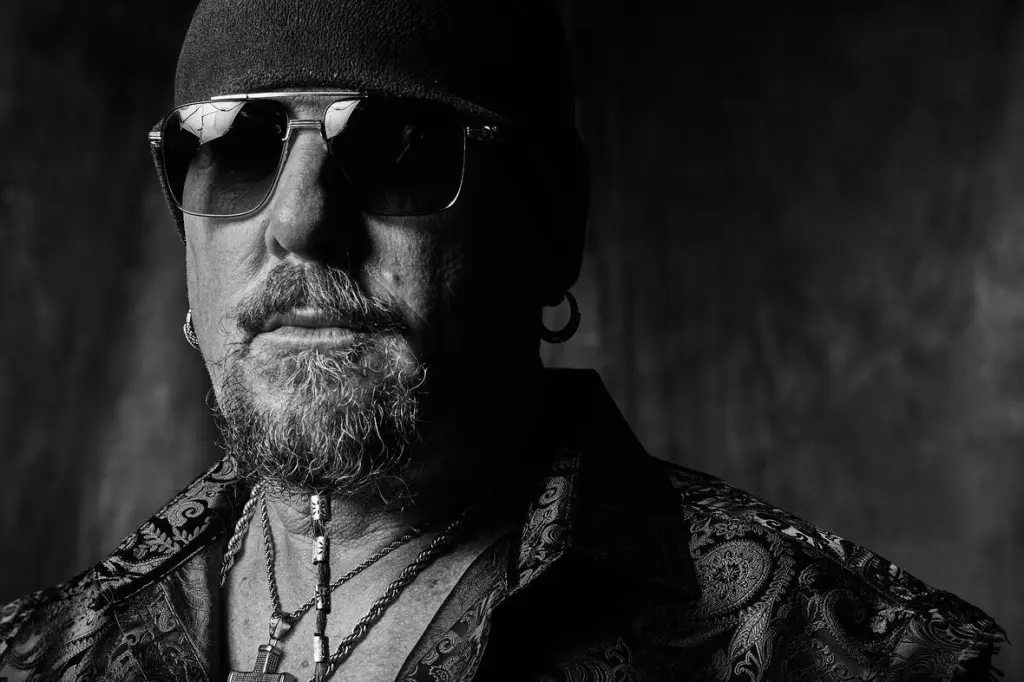
Leave a Reply